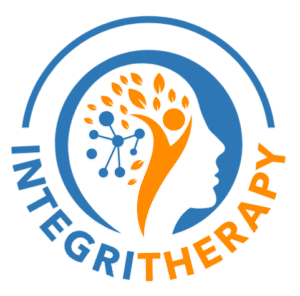Do You See the World This Way?
Some people perceive their world in rigid, divided categories – liked vs. disliked, success vs. failure.
In reality, the world is far more complex than that.
That’s why the answer to such a question cannot be simple or universal.
If you struggle with the feeling of being “unlikable,” there are many possible reasons that need to be considered before you start making changes.
Unfortunately, the question itself often lacks enough information for anyone to truly understand what the underlying issue is.
Here we return to a key principle of Gestalt therapy:

We cannot understand the meaning of an event without knowing the field from which it emerged.
There are too many possible interpretations.

Does Your Situation Look Like This?
Imagine a simple picture – a drawing of a field that symbolically represents you and your background (what remains unseen).
If you are like the little fawn in this picture, then your youth or lack of life experience could be contributing to your challenges.
Or perhaps you are simply different from the people you wish to connect with.
Two Bunnies – One Fawn.
In the picture there are two bunnies and only one young deer.
Maybe the group’s “standards” are shaped around bunnies, not deer.
In other words – there is nothing wrong with you; you just don’t completely fit into that particular environment.

Or maybe your situation looks more like this:
The people around you might fear you – seeing you not as different but as “intimidating” or “threatening.”
Insufficient Information
To truly understand, we need to know more about:
You: age, gender, appearance, education, goals, interests.
Likability: what makes you believe you’re not liked? What traits or behaviors might others find off-putting?
Others: whom do you want to be liked by? What are their values and criteria? What kind of people do they find likable?
Please Define “Likable.”
There is no single definition.
Different people, at different stages of life and with different goals, perceive “likability” differently.
Someone who is likable to me might not be likable to you – or to the group you want to belong to.
For some, being likable might mean being:
-
cool,
-
wealthy,
-
kind,
-
friendly,
-
funny,
-
highly intelligent.
Reflection
Often, when a person searches for an answer to why they don’t feel “liked,” there is not enough clarity about the context in which this feeling arises.
Without specific information about one’s personal characteristics, experiences, and social environment, it is difficult to draw precise conclusions or offer helpful guidance.
Sometimes this search is driven by an unconscious assumption – the belief that others think as we do and understand our experience without us having to explain it.
This mindset often leads to misunderstanding and a sense of disconnection.
It can be deeply useful to pause and explore the question more consciously – to reflect not only on your own position but also to imagine how it might appear from someone else’s perspective.
Ask Yourself:
-
What am I truly looking for by asking this question?
-
Have I made my question clear enough for others to understand?
-
Can I view my situation through the reader’s or observer’s eyes?
-
Do I see things only from my perspective, or can I sense other points of view?
-
Do I realize that people perceive reality differently – both from me and from each other?
-
After reading this reflection, has my understanding of the issue shifted in any way?
In a Therapeutic Context
This awareness marks the first step toward emotional maturity – realizing that our experience is only one of many perspectives.
When we begin to see reality not only through our own lens but also through the eyes of others, we create space for understanding, empathy, and genuine communication.
This awareness not only helps us feel more understood but also enables us to build meaningful relationships where authenticity and acceptance replace the fear of rejection.
My 5 Steps Toward Being a More Likable Person
1. Start with Self-Acceptance
You can’t truly connect with others if you secretly judge yourself.
Work on your inner dialogue – the way you speak to yourself.
When we are kind and forgiving toward our own imperfections, we naturally extend the same warmth toward others.
Therapy and mindfulness practices help soften the inner critic and build a more stable and compassionate self-image.
2. Practice Curiosity, Not Performance
People love to feel seen.
Instead of worrying about how you appear to others, focus on getting to know them.
Ask gentle questions, listen to what matters to them, and respond with genuine interest.
This creates an emotional bridge – it shifts the energy from “How do I look?” to “How are you?”
3. Express Warmth Through Small Gestures
Smile when you greet people, remember small details, use their names.
Warmth is a nonverbal language – tone of voice, eye contact, presence.
Even in silence, when you’re fully present, you become magnetic.
4. Regulate Your Energy
If your emotions swing between enthusiasm and withdrawal (common among sensitive or empathic people), focus on emotional balance.
Grounding techniques, mindful breathing, and journaling can help you stay centered – people feel safe around steady energy.
5. Be Consistent and Congruent ❤️
Likability grows where people sense integrity.
Say what you mean, mean what you say, and act in alignment with your values.
You don’t have to be perfect – just real, open, and kind.
In Essence
Don’t aim to be liked.
Aim to be present, kind, and emotionally aware.
The rest follows naturally.
Source: Adapted from materials by Elinor Greenberg, PhD, author of Borderline, Narcissistic, and Schizoid Adaptations.
Author: Petya Bankova
With love and care





